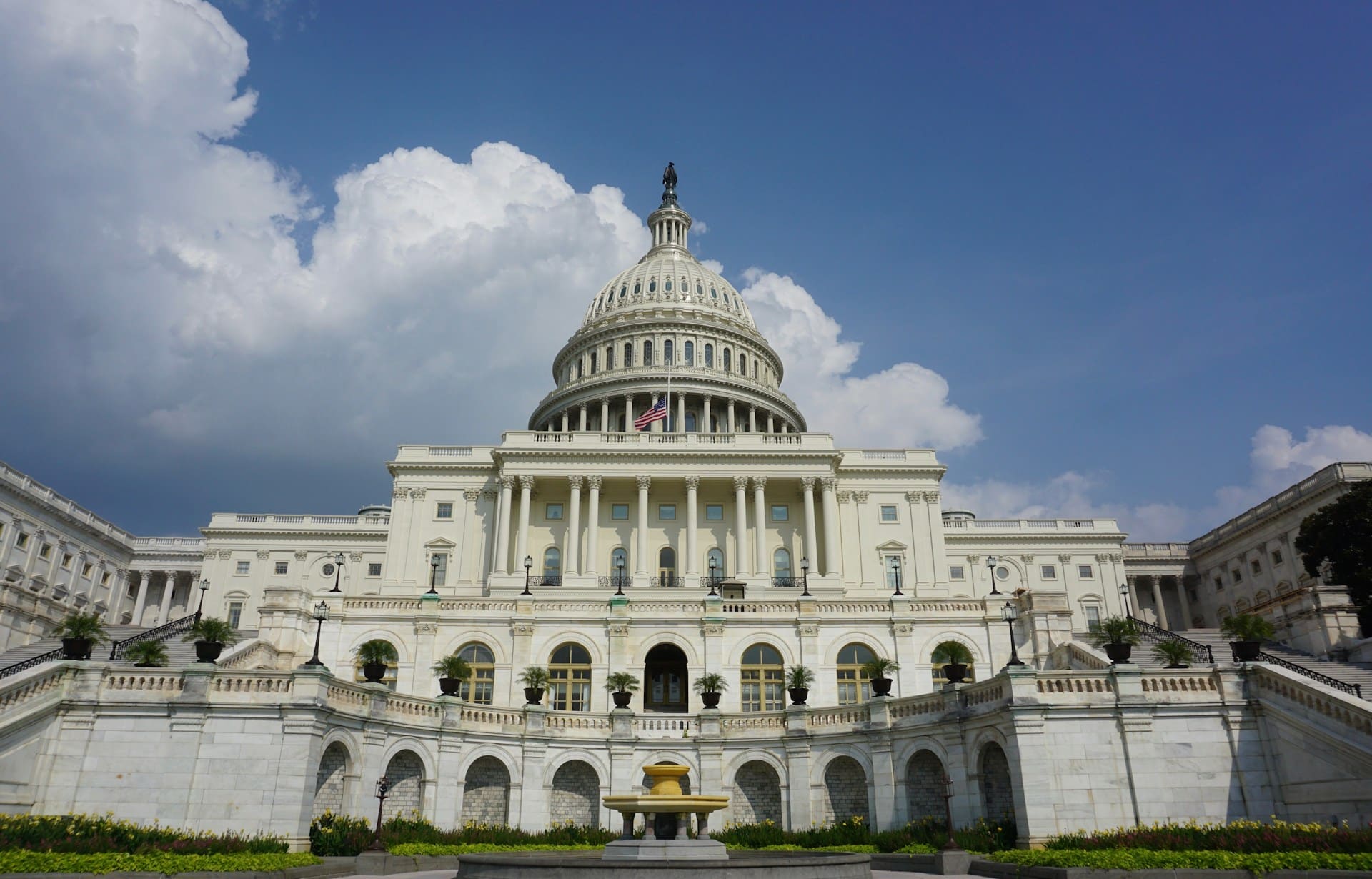View/Download this article in PDF format.
Despite last year’s drought, the agriculture sector recorded its second highest year of profits in a generation, down just three percent from 2011 record farm income of $118 billion. Even without record payouts from the highly subsidized federal crop insurance program, farm profits would still have surpassed the ten-year average while bolstering agribusinesses’ bottom lines. With record land and crop prices, low levels of farm debt, and the availability of generous government subsidies, farmers are not marching on Washington demanding a new farm bill.
However, this is not the message farm sector interest groups are pushing in Washington. A “Farm Bill Now” rally was organized in Sept. 2012 to call on Congress to pass a new trillion dollar farm bill full of outdated, wasteful, and unnecessary agricultural subsidies. While some farmers attended the rally, they were primarily representing the 39 commodity and trade organizations trying to drum up farm bill support for new agricultural subsidies, like new income guarantee programs and special-interest carve-outs for catfish and cotton. One of the most prominent farm lobbyists, the American Farm Bureau’s Mary Kay Thatcher, recognized this. In Feb. 2013, she predicted only a 25 percent chance of passing a farm bill before the end of the year since, in her words, “There’s little sense of urgency to finish the farm bill. Farmers are apathetic right now, as are congressional leaders.” Most farmers agree that the outdated direct payment program should be ended, but they aren’t calling Washington asking for more subsidies during the most profitable period in their lifetime.
So if agricultural producers aren’t clamoring for a new farm bill, what’s going on in farm country? Record crop insurance payouts, combined with other federal agricultural subsidies and record commodity and land prices, have bolstered agribusinesses’ incomes. We’ll examine current agricultural policies’ effects on farm income, agribusinesses’ ability to spend more money in the local economy, land and commodity prices, and land use changes across farm country.
Record Farm Profits
Agribusinesses are not only doing well by historical standards, but they are also earning significantly more than the average U.S. household. Record crop insurance subsidies and sky high crop prices, bolstered by U.S. agricultural policies and biofuels mandates, have increased agribusinesses’ bottom lines. In fact, 2013 farm profits are expected to set a new record of $128 billion, up nearly 14 percent from 2012’s forecast of $113 billion; even if adjusted for inflation, 2013 farm profits are expected to be the highest since 1973. If that wasn’t enough, agribusinesses are expected to earn a median household income of $58,845 this year, nearly $9,000 more than other U.S. households. In fact, according to the U.S. Department of Agriculture’s Economic Research Service (USDA-ERS), “median total farm household income [has] exceeded the median U.S. household income in every year since 1998.” And in case you need more convincing, the real value of farm assets is also expected to hit a new record this year of $2.34 trillion while farm debts fall to a historically low level.
Hefty Farm Profits Translate into Higher Economic Spending
Since agribusinesses have done so well in recent years and are able to “write off” farm business expenses from their federal income taxes, spending on new agricultural equipment, buildings, storage bins, land purchases, and other capital expenses has hit an all-time high. Creighton University economist Ernie Goss estimates that the Midwest economy will continue to grow due to “healthy growth in farmland prices and the sales of farm equipment.” As an example of the wealth in farm country, agricultural equipment dealers such as John Deere reported as early as Dec. 2012 that most 2013 orders for combines and sprayers were already sold out. Another equipment dealer, Case IH, predicted that the 2012 drought would not affect equipment purchases since highly subsidized federal crop insurance “will make the difference.” Tom Evans, vice president of sales at Case IH, also commented in Dec. 2012, “Across our lines, you would never know anything was wrong… Pay taxes or buy something? That actually could push [farmers] to purchase new equipment.” These comments demonstrate that farm lobby’s calls to pass a farm bill in the name of the 2012 drought are severely misguided.
Record Crop Prices Lead to High Land Prices and Barriers for Beginning Farmers
Thanks to government interventions, particularly the federal Renewable Fuels Standard (RFS) mandate, and various demand drivers like population growth and a greater appetite for animal products, crop prices have skyrocketed in recent years. While groups such as the National Corn Growers Association promised years ago that corn yields, for instance, would keep up with increased demand for corn ethanol fuel, exports, and animal feed, yields have come up short. Last year, the average U.S. cornfield produced just 123 bushels per acre, the lowest level since 1995-96. As a result, crop prices skyrocketed to new highs; in fact, corn prices quadrupled in just ten years. Coupled with the value of agricultural subsidies being built into land prices (partially because those who receive the bulk of farm subsidies also own the most acres), farmland is selling for prices that were unimaginable just a few years ago. USDA-ERS reports that when agricultural subsidy payments increase income from farm production, “the expectation of future payments may be capitalized into the value of farmland.”
Researchers’ findings about the impacts of various government farm subsidies on land prices and farm consolidation have concluded that:
- Some farm subsidy payments fail to reach their intended target – working farm families – and instead fall in the hands of landlords. In the Northern and Southern Plains and Corn Belt, non-operating landlords own more than 30 percent of all farmland and 77 percent of farmland that is rented. According to USDA’s former Chief Economist, farmland values have increased 15 to 25 percent due to farm subsidy payments, benefiting all landowning farm households regardless of whether they are direct recipients of farm subsidies.
- “Counties with higher levels of direct payments lost more farms while increasing their farm size – evidence of consolidation.” Economists also note that these outdated payments can cause farm sizes to increase up to 78 acres per farm and land prices to increase.
- Crop insurance subsidies result in increases in cropland values, especially in recent years when indemnity payments have exceeded premiums paid by farmers by a 2- or 3-to-1 margin.
- Loan deficiency payments, “which pay when market prices fall below the local loan rate— can add significantly to the value of land, due to reduced variability of farm earnings and more certain cash flow.”
Numerous unintended consequences can arise from agricultural consolidation and misdirected farm subsidy payments. When farmland prices are inflated due to various subsidy payments, young and beginning farmers are put at a disadvantage when trying to afford land and high startup costs. The price of U.S. farmland alone has more than doubled from just a decade ago. While there is a lot of talk in Congress about helping young and beginning farmers, USDA statistics show that this group of farmers is less likely to benefit from federal crop insurance subsidies and conservation and commodity programs than established farmers. Finally, since nonoperating landlords and large-scale farms are more likely to enroll in commodity subsidy programs as opposed to conservation programs, there is a question of whether federal payments are benefiting the rural economy and helping conserve land for future generations, as they were intended.
Land Use Changes Spurred by High Crop Prices and Agricultural Policies
As stated above, various agricultural subsidies have a direct effect not only on land prices but also producers’ decisions to drain wetlands and/or tear up sensitive land such as highly erodible acres, pasture, or native grassland to reap record high crop prices. Crop insurance subsidies fail to require agricultural producers to be accountable for the billions in taxpayer subsidies they receive each year. So, with unlimited taxpayer subsidies, an agribusiness can plant corn in marginal soil that is likely to fail but assume virtually none of the risk that comes with such a questionable business decision. A recent study from South Dakota State University found that biofuels mandates and agricultural subsidies from 2006 to 2011 contributed to a loss of 1.3 million acres of grasslands in the Dakotas, NE, IA, and MN as more corn and soybeans were planted on acres that had never been cropped before. Crop insurance subsidies have also increased the rate at which wetlands were drained and converted to crop production: from 1992 to 1997, federal subsidies were responsible for a fifth of the net loss of non-Federal wetlands.
Costs of Water Pollution Shifted onto Taxpayers and Downstream Users
It’s no surprise that the most input-intensive and widely produced crops – corn, cotton, soybeans, and wheat – also happen to be those that are heavily subsidized by the government. Since corn is the largest user of nitrogen fertilizer and pesticides, nearly half of U.S. inputs are applied to corn (46 and 43 percent, respectively). Corn acres have increased to their highest level in over 75 years and annual rotations with other crops have been forgone as agribusinesses strive to take advantage of high crop prices; at least six percent of the increase in corn acres can be directly attributed to the effect of federal agricultural subsidies. Fertilizer and pesticide runoff from more corn plantings has led to increased water pollution which increases costs for downstream users. More costs are borne by municipalities for drinking water treatments, fishermen in the Gulf of Mexico due to lower fish counts, and fishermen, hunters, and recreational water users that are accustomed to enjoying the benefits of clean water sources.
But the costs don’t stop there. With pressure to reap the greatest profit out of each acre, agribusinesses have increasingly installed underground drainage tile designed to accelerate the rate at which water leaves the field and enters nearby waterways. This way, agricultural producers can plant and harvest more acres of each field without having to drive huge equipment around wet spots, ponds, streams, etc. More acres then become suitable for crop production even though there is a greater likelihood of water pollution due to unfiltered, nitrogen-laden water reaching nearby rivers and streams. USDA’s Natural Resources Conservation Service (NRCS) warns that “tile [drains] are being installed faster than conservation practices are being adopted to address the modified flow of water and nutrients.” The quest to turn a profit from growing corn in dry areas of SD, ND, and NE has resulted in numerous downstream costs as others are left picking up the tab for agribusinesses’ risky production decisions.
Conclusion
Now more than ever, agribusinesses are enjoying banner years of farm profits. Boosted by agricultural subsidies, subsidized crop insurance, and biofuels mandates, crop and farmland prices have skyrocketed to record levels. Agribusinesses have responded by planting more sensitive acres to subsidized crops and spending more on new equipment, buildings, and other capital expenses to avoid paying higher federal income taxes. These changes have had a direct impact on the ability of beginning farmers to get started in agriculture and on the downstream costs of cleaning up water pollution from land use changes and a greater use of fertilizer and chemical. Taxpayers should no longer provide unlimited subsidies to agribusinesses that would otherwise be profitable. Agricultural producers should also be accountable to taxpayers if they receive any federal supports, by conserving land for future generations and not pushing costs of doing business onto others. A more cost-effective, accountable, transparent, and responsive agricultural safety net can be created but first, perverse incentives must be eliminated. With record farm profits expected this year, a better time couldn’t be found to finally reform the farm safety net.
For more information, visit www.taxpayer.net, or contact Joshua Sewell, josh at taxpayer.net.










Get Social